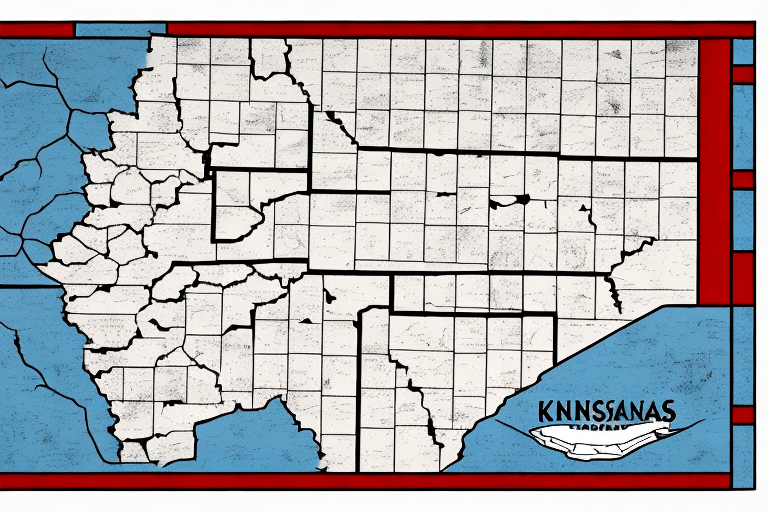Understanding the UPS Dangerous Goods Fee
Shipping hazardous materials requires careful consideration of various fees and regulations to ensure safety and compliance. One such fee is the UPS Dangerous Goods Fee, which covers the additional costs associated with handling and transporting hazardous materials. This guide provides an in-depth analysis of the UPS Dangerous Goods Fee, including what qualifies as dangerous goods, fee calculations, exemptions, packaging and labeling requirements, and best practices for compliance.
What Are Dangerous Goods?
Dangerous goods are products or materials that pose risks to health, safety, property, or the environment during transportation. These include, but are not limited to, explosives, flammable liquids, gases, chemicals, toxic substances, and batteries. Both commercial and consumer-grade items can fall under this classification.
Regulations and Classification
The transportation of dangerous goods is governed by strict regulations that vary depending on the mode of transport and the specific type of goods. Key regulatory aspects include:
- Packaging Requirements: Ensuring that goods are packed to prevent leaks, spills, or reactions.
- Labeling and Marking: Clear identification of hazardous materials to inform handlers and emergency responders.
- Documentation: Accurate paperwork detailing the nature and quantity of dangerous goods.
Regulatory bodies such as the U.S. Department of Transportation (DOT) and the International Civil Aviation Organization (ICAO) provide comprehensive guidelines to ensure safe transportation.
Understanding the UPS Dangerous Goods Fee
The UPS Dangerous Goods Fee is charged to cover the additional costs associated with the safe transportation and handling of hazardous materials. This fee is essential for maintaining safety standards and regulatory compliance.
Why Does UPS Charge This Fee?
UPS incurs extra expenses when handling dangerous goods, including:
- Specialized equipment and vehicles designed for transporting hazardous materials.
- Training programs for personnel to ensure safe handling and emergency response.
- Compliance with regulatory requirements, including documentation and reporting.
By charging this fee, UPS ensures that these additional costs are covered, allowing for the safe and efficient transport of dangerous goods.
How Is the Fee Calculated?
The UPS Dangerous Goods Fee is determined based on:
- Shipment Weight: Heavier shipments typically incur higher fees.
- Type of Dangerous Goods: Different classes of hazardous materials may have varying fee structures.
For precise calculations, UPS provides a Dangerous Goods Fee Calculator on their website.
Exemptions and Waivers
In certain cases, the dangerous goods fee may be waived or exempted, including:
- Shipments of personal items.
- Food and cleaning products.
- Medical supplies and equipment, provided they are properly packaged and labeled.
It's advisable to consult with UPS customer service to determine eligibility for exemptions or waivers.
Identifying Dangerous Goods in Your Shipment
Before shipping, it's crucial to identify whether your shipment contains dangerous goods to comply with regulations and avoid additional fees.
Types of Products Considered Dangerous Goods
Common examples of dangerous goods include:
- Gasoline and other flammable liquids.
- Lithium batteries.
- Pesticides and fertilizers.
- Fireworks and explosives.
Classification can vary by region, so always refer to local regulations for specific classifications.
Determining If Your Shipment Contains Dangerous Goods
UPS provides a comprehensive list of hazardous materials categorized by class and division on their website. If in doubt, it's best to consult with UPS customer service or a hazardous materials professional to ensure accurate classification.
Packaging, Labeling, and Documentation
Proper packaging, labeling, and documentation are essential for the safe and compliant transport of dangerous goods.
Packaging Requirements
Packaging must:
- Withstand transportation conditions.
- Prevent leaks, spills, or reactions.
- Contain appropriate cushioning and stabilization materials.
Refer to the PHMSA guidelines for detailed packaging standards.
Labeling Your Dangerous Goods Shipment
All packages must feature:
- Warning labels indicating the nature of the hazardous material.
- Placards and markings as required by regulations.
- Accurate and visible information to inform handlers and emergency responders.
Completing Necessary Paperwork
Essential documents include:
- Hazardous Materials Shipping Paper: Details about the type, quantity, and handling of the hazardous materials.
- Bill of Lading: A legal document serving as a receipt and contract between the shipper and carrier.
- Safety Data Sheet (SDS): Provides comprehensive information about the hazardous material's properties and safety precautions.
Accurate completion of these documents is vital to avoid delays and ensure safety.
Consequences of Non-Compliance
Failure to comply with dangerous goods regulations can lead to severe consequences, including:
Risks and Consequences
- Fines and legal actions.
- Accidents causing harm to individuals and the environment.
- Revocation of shipping privileges.
Even unintentional mislabeling or misdeclaration can result in significant penalties.
Tips for Avoiding Common Mistakes
- Always verify the classification of your goods.
- Ensure proper packaging and labeling according to regulations.
- Maintain accurate and complete documentation.
- Stay informed about regulatory updates and changes.
Compliance Best Practices
Adhering to UPS's dangerous goods policies and regulations requires a proactive approach:
Stay Informed
Regularly review industry standards and government regulations to stay updated on any changes affecting dangerous goods transportation.
Training and Resources
Utilize training programs and resources provided by UPS to educate employees about handling hazardous materials safely and compliantly.
Implement Internal Controls
Establish internal procedures to ensure all shipments are properly classified, packaged, labeled, and documented before shipping.
Comparing UPS Fees to Other Carriers
The UPS Dangerous Goods Fee is competitive with other major shipping carriers, such as FedEx and DHL. However, fee structures can vary based on factors like shipment weight, type of hazardous material, and service level:
- FedEx: Similar fee structures with specific charges for different classes of hazardous materials.
- DHL: Offers tailored services and pricing based on the complexity and volume of hazardous shipments.
It's advisable to compare fee schedules and service offerings from multiple carriers to ensure cost-effectiveness and suitability for your specific shipping needs.
Frequently Asked Questions
Here are some common questions regarding the UPS Dangerous Goods Fee and shipping regulations:
- Q: Does UPS offer any training resources for shipping hazardous materials?
- A: Yes, UPS provides comprehensive training resources and online tools to assist customers in understanding the proper procedures for shipping hazardous materials.
- Q: What is an example of a situation where the dangerous goods fee may be waived?
- A: Shipments containing personal items, food, or cleaning products may be exempt from the dangerous goods fee, depending on the specific hazardous materials involved.
- Q: What potential risks are associated with shipping improperly declared dangerous goods?
- A: Improperly declared dangerous goods can lead to health hazards, environmental damage, fines, legal actions, and the revocation of shipping privileges.
Conclusion
Understanding and complying with the UPS Dangerous Goods Fee and associated regulations is crucial for the safe and legal transportation of hazardous materials. By properly identifying dangerous goods, adhering to packaging and labeling requirements, completing necessary documentation, and staying informed about regulatory changes, shippers can avoid costly mistakes and ensure the safety of all parties involved. Utilizing UPS's resources and training can further enhance compliance and streamline the shipping process for dangerous goods.




















